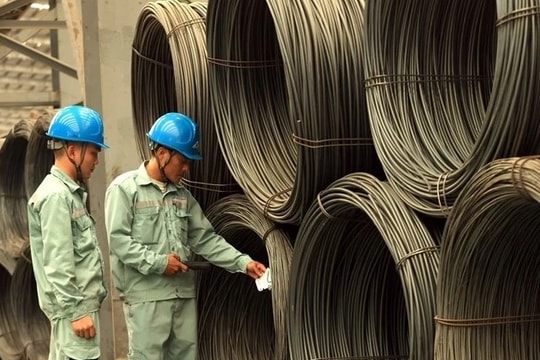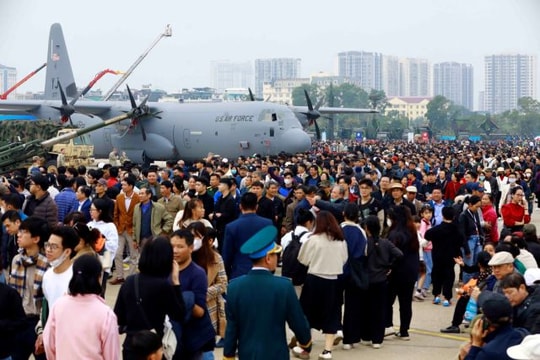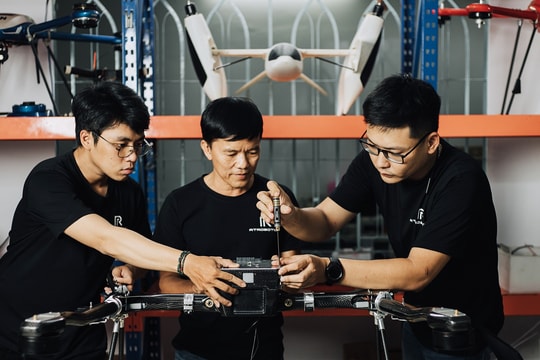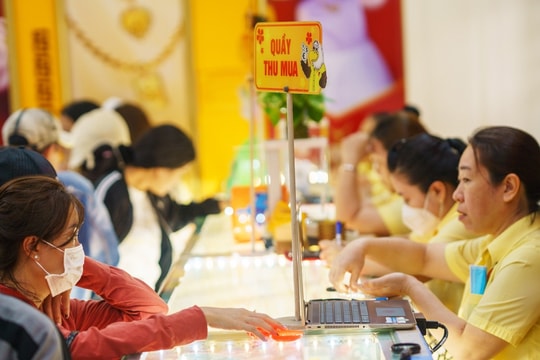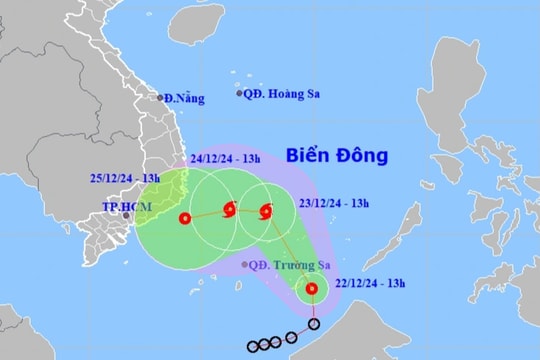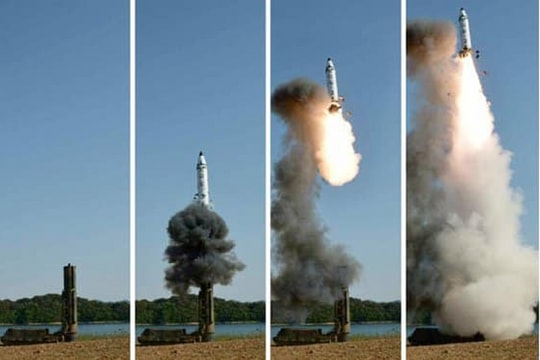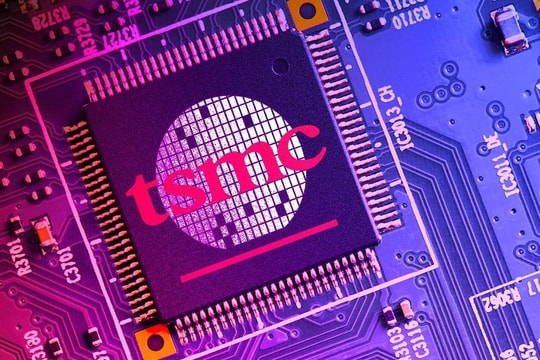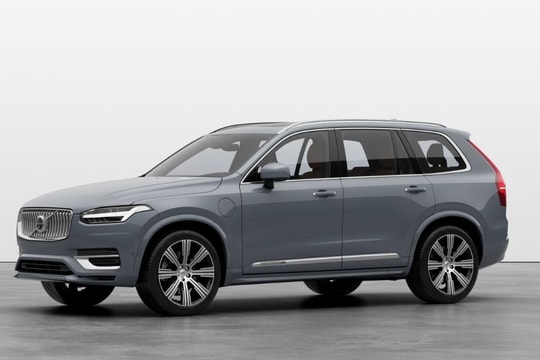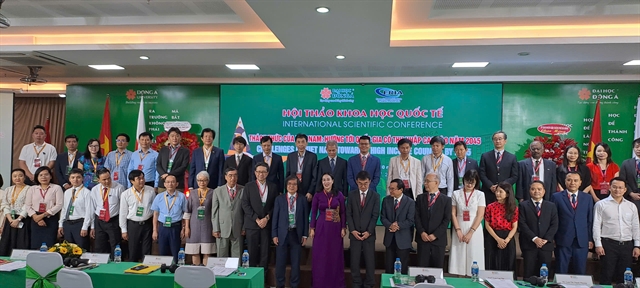 |
| Participants join a photo session at the conference: Challenges of Việt Nam toward a high-income country by 2045 at Đà Nẵng City's Đông Á University. VNS Photo Công Thành |
ĐÀ NẴNG — Việt Nam needs a dramatic change through institutional and legal reforms along with economic restructuring for the rapid and sustainable development required to achieve its goal of becoming a high-income country by 2045.
This statement was shared by Dr Võ Trí Thành, Chair of the Vietnamese Committee for Pacific Economic Cooperation Council (PECC) and Senior Expert at the Central Institute for Economic Management (CIEM), at a conference called 'Challenges of Việt Nam toward a high-income country by 2045'.
Thành said Việt Nam has been working towards becoming a prosperous country for the 100th anniversary of Independence Day in 2045.
“Việt Nam is seen as one of the most open economies globally in terms of growing trade and investment since the country initiated the Đổi Mới (Renewal) policy nearly four decades ago. The country had transited from a poor country to a middle-income country, with more than 930,000 enterprises and five million household businesses established,” Thành said.
“However, a new drastic and widespread reform process is needed for the country to perform well and rise along with the world's leading economies,” he said.
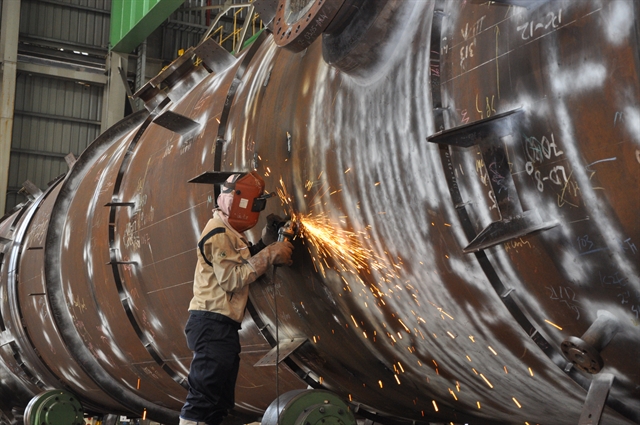 |
| A worker welds a steel structure at an industrial park in central Việt Nam. The country aims to develop into a high-income nation by 2045. Photo courtesy of Doosan Vina |
The country should see an average annual growth rate of up to 5.5 per cent over the next two decades to reach the milestone of becoming a developed, high-income country, he pointed out.
Thành warned that despite successful achievements resulting from the Đổi Mới policy, Việt Nam will find it challenging to escape from the ‘middle-income trap’ and pursue higher economic development.
The economist added that other challenges, such as capital, environment, technology, institutional reform, workforce training and especially reaching the net-zero targets by 2050, will set up significant hurdles for Việt Nam to attain its goal of prosperity.
“Việt Nam must build a ‘green’ transformation economy to avoid losing 13 to 19 per cent in GDP, or 70 per cent of export turnover in the next few decades,” he noted.
Dr Trần Văn Thọ, professor emeritus at Waseda University in Tokyo, Japan suggested Việt Nam should boost investments in innovation-based and new tech industries for fast and sustainable growth, as well as improving labour productivity.
He said the country must transform drastically, from export-oriented production with a focus on low-cost, intensive labour into high added-value industries to create a competitive advantage in the global market.
“Việt Nam should support small and medium-sized enterprises in key industries to join global value or supply chains rather than just processing and assembling products for export,” Thọ shared.
“The country will eye training a high-quality workforce for high added-value industrial manufacturing industries. This is because processing and assembling industries are seen as important in Việt Nam, but they have limited added value. Meanwhile, export-oriented production is heavily dependent on importing materials and key equipment for production,” he explained.
Thọsaid value-added industrial production per capita in Việt Nam was quite low in comparison to regional countries.
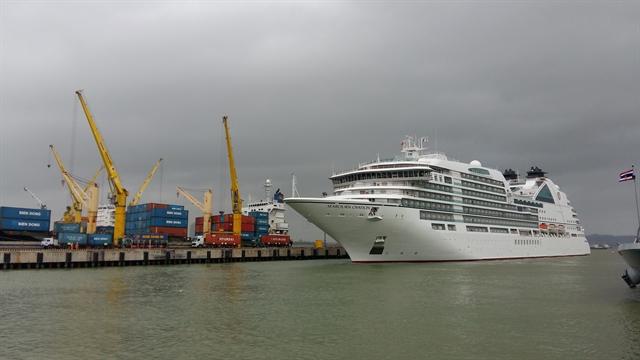 |
| A cruise docks at Đà Nẵng City's Tiên Sa Port. Việt Nam has targeted to be a developed country with high income in 2045. VNS Photo Công Thành |
"In getting out of the middle-income trap, labour productivity, the informal economic sector and agriculture – which account for 63 per cent of total labourers – must develop as larger business groups or key hi-tech industries, or build hi-tech joint-venture partnerships for global value or supply chains,” he added.
"The country needs greater investment in supportive industries, innovation, technology and R&D for the economic transformation. Currently, R&D only has a 0.7 per cent share in GDP, so high and medium-skill manufacturing industries should be rapidly given priority, while unskilled workers in labour-intensive, export-oriented manufacturing should be limited."
Thọ noted that only 3,400 out of 110,000 businesses in Việt Nam (excluding 1,100 FDI enterprises) are engaged in supporting industries and added-value production.
Nguyễn Anh Dương, from CIEM, highlighted the digital transformation and AI in developing a model for a high-income country.
He said that manufacturing and processing industries account for only 20 per cent of GDP, while AI applications in industrial production could contribute anywhere from US$20 billion to $220 billion by 2030.
Professor Tetsuya Watanabe, President of the Economic Research Institute for ASEAN and East Asia (ERIA), emphasised Việt Nam's target of becoming a high-income nation by 2045 at the 13th Communist Party Congress in 2021.
In supporting the 2045 target, ERIA, along with former Japanese Ambassador to Việt Nam Yamada Taki, spent two years preparing the report: Việt Nam 2045 - Development Issues and Challenges with cooperation from 30 Vietnamese and Japanese experts as well as researchers from other countries.
The 600-page report also includes many recommendations for building plans and making policies to reach the target.
In 2021, Việt Nam’s gross domestic product (GDP) per capita was $3,694, and its Gross National Income (GNI) per capita was $3,560.
The country will likely reach the upper middle-income level in 2025, according to ERIA.
Việt Nam has set a long-term goal of becoming an industrialised country with a GDP of $2.5 trillion by the mid-21st century, achieving around $18,000 in GNI per capita. VNS






